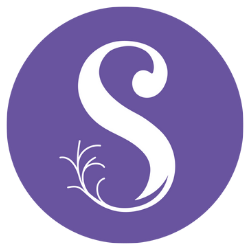In our high-tech, high-stress world, it’s easy to become disconnected from our own bodies. The way we move, sit, and even breathe can become automatic, leaving us out of touch with what our body really needs. That’s where somatic movement comes in.
Somatic movement is an incredible practice that connects the mind and body in ways that promote healing, relaxation, and overall well-being. Unlike traditional exercises that primarily focus on strengthening or flexibility, somatic movement emphasizes mindful awareness of the body and its sensations. This approach not only enhances physical health but also supports emotional and mental well-being.
Somatic movement refers to any practice that emphasizes the internal experience of movement, helping individuals connect with their bodies and become more mindful. Examples include somatic yoga, dance therapy, Qigong, and gentle stretching, all designed to release tension, increase body awareness, and promote nervous system regulation. This practice is beneficial not just for physical well-being but also for emotional healing, chronic pain relief, and trauma recovery. Whether through micro-movements or mindful flow exercises, somatic movement helps create a deeper mind-body connection and supports a more balanced, grounded way of living.
Discover how you can begin implementing somatic movement into your day!
What is Somatic Movement?
Somatic movement refers to any exercise or practice that focuses on the internal experience of movement, rather than external form. It emphasizes paying attention to how your body feels as you move, bringing you into the present moment and encouraging mindfulness. It includes practices like somatic yoga, dance, or simple movements that help release tension and cultivate body awareness. In contrast to traditional workouts or yoga practices, somatic movement is about creating awareness and listening to your body’s signals. Whether it’s through mindful stretching, somatic workouts, or even gentle flow exercises, somatic movement helps you tap into a deeper connection with yourself.
How does it differ from other somatic work?
Somatic movement is a specific subset of somatic work that focuses primarily on moving the body in a mindful and conscious way. While all somatic movement is a form of somatic work, not all somatic work involves movement—some might focus more on stillness, introspection, or subtle body awareness without physical movement.
What are some examples of Somatic Movement?
Somatic movement practices all encourage you to listen to and move in harmony with your body. While somatic yoga and workouts are wonderful starting points, there are a variety of somatic practices you can try to find what resonates most with your body:
- Somatic Dance Therapy: Involves moving freely and intuitively to music to process emotions and release bodily tension.
- Somatic Yoga: Emphasizes focus on sensations within the body while moving through poses to release tension, develop body awareness, and find freedom in movement.
- Qigong: Combines slow, flowing movements and controlled, deep breathing to improve balance and energy flow throughout the body.
- Feldenkrais Method: Uses gentle movements to increase self-awareness, ease of movement, and physical functioning.
- Alexander Technique: Focuses on improving posture and coordination by releasing unnecessary tension in the body.
- Somatic Workouts: Involves a mindful approach to movement focused on body awareness, tension release, and nervous system regulation rather than physical performance or aesthetics.
- Gentle Stretching: Emphasizes slow, mindful stretches that promote flexibility and ease tension without pushing the body to its limits.
- Mobility Exercises: Uses movements designed to improve joint range of motion and overall fluidity in body mechanics.
- Micro-Movements: Involves small, subtle movements to help release tension and increase awareness in specific areas of the body.
The beauty of somatic movement is that there’s no one-size-fits-all approach. Whether you’re doing a somatic yoga flow, exploring the Feldenkrais Method, or even practicing mindful walking, these movements encourage you to find what feels good and healing for your body.
What are the benefits of Somatic Movement?
The goal of any somatic work isn’t just about achieving optimal physical health; it’s about achiveing emotional well-being and mental clarity as well. Here are some key benefits of incorporating somatic movement into your routine:
How to Implement Somatic Movement Into Your Day
Incorporating somatic movement into your daily routine doesn’t have to be complicated. Here are some easy ways to start building these mindful practices into your everyday life:
Conclusion
Your body holds onto stress, trauma, and tension in subtle ways that can impact both your mental and physical health. Somatic work gives you the tools to listen to what your body is telling you, release old patterns of tension, and create new, healthy ways of moving and living.
Somatic movement—whether through yoga, Qigong, or gentle somatic workouts—is a powerful way to reconnect with your body and improve your overall well-being. It’s not just about physical exercise; it’s about creating space for healing and transformation. The benefits go beyond the mat, helping you feel more grounded, present, and aligned in your daily life. Try incorporating somatic movement into your routine and see how it can create positive change from the inside out!
If you’re ready to explore somatic yoga, somatic workouts, and other movement-based practices in more depth, the SomaShare app is the perfect place to start. Our app offers a wide range of somatic practices led by trauma-informed practitioners, designed to help you reconnect with your body, release tension, and cultivate a more mindful life.
Our library of audio practices includes everything from somatic stretching flows to somatic exercise routines and dance sessions that you can do right from home. Whether you’re a beginner or experienced in somatic practices, you’ll find something that meets your needs.
Download SomaShare today and take the first step in your journey toward deep healing and lasting transformation.

